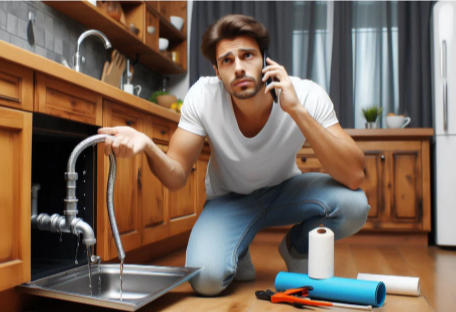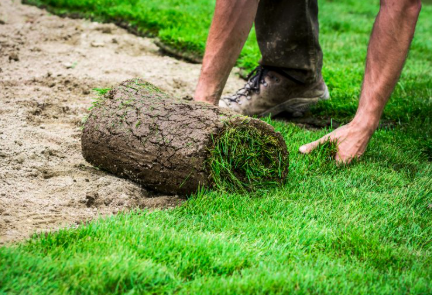Stay Ahead of Leaks: Proactive Plumbing Tips for Every Household
Most Common Plumbing Issues at Home
Homeowners often face plumbing issues, such as slow-draining sinks, leaking faucets, and running toilets. These leaks can lead to up to one trillion gallons of wasted water annually in the US, putting strain on water utility bills and increasing the risk of property damage. Ignoring these warning signs can result in costly water damage, unplanned repairs, and even diminished water quality.
Homeowners must address these plumbing issues to prevent costly damage and maintain good water quality. For those unsure where to turn for guidance, connecting with an Affordable Plumber ensures you get expert advice and prompt service when it matters most. Proactive attention prevents emergencies, keeps costs down, and preserves peace of mind.
Many homeowners also overlook the importance of regular maintenance, which can catch issues long before they escalate. Simple steps like inspecting under-sink connections or checking water pressure can reveal problems early. Investing in preventative care extends the life of your plumbing system and adds long-term value to your home.
Key Takeaways
- Consistent, proactive maintenance is your best defense against expensive plumbing repairs and water damage.
- Simple upgrades like water-saving fixtures significantly impact household budgets and cognize early warning signs, and the limits of DIY can prevent minor issues from becoming full-blown emergencies.
Simple Preventative Tasks for Every Homeowner
- Examine areas beneath all sinks weekly for drips, condensation, or signs of rust and mineral buildup.
- Flush bathroom and kitchen drains with boiling water or a gentle homemade solution monthly to reduce buildup.
- Never dispose of cooking oil, greasy foods, or fibrous food scraps (like celery) down the drain; use a compost bin or trash instead.
- Inspect supply lines for appliances (such as dishwashers and washing machines) twice yearly for wear or bulges.
- Use inexpensive water pressure gauges to ensure that home pressure does not exceed 60 psi, which can prolong the lifespan of your system.
These simple, regular checks are often overlooked in busy households, but they’re essential for preventing disaster and prolonging the life of pipes and fixtures. Quarterly walk-throughs and annual system check-ups become manageable routines that help prevent sudden, costly breakdowns. Even a small effort, like cleaning hair and soap residue from shower drains every few weeks, keeps water flowing and avoids stubborn blockages. Prevention isn’t just practical; it sets the stage for a healthier, more efficient home.
Water Conservation Tips That Work
In today’s climate, conservation is on everyone’s mind, and plumbing plays a vital role. Simple upgrades, like replacing older, inefficient toilets and faucets with water-saving models, can have a massive effect. According to EPA WaterSense findings, swapping in more efficient fixtures can trim household water use by as much as 20%, which adds up to thousands of gallons (and dollars) each year. Start small: even fixing that continuous drip from your bathroom faucet can save hundreds of gallons.
If your budget permits, updating showerheads, adding faucet aerators, and prioritizing efficient dishwashers multiply your savings across the whole house. Changing daily habits further boosts your conservation efforts. Shortening showers by a minute or two, shutting off the tap when brushing teeth, and only running the washing machine or dishwasher with full loads reduce waste and utility costs. Monitoring your home’s water meter can also reveal hidden leaks or abnormal consumption, helping you avoid unseen problems that could otherwise slip through the cracks.
Telltale Signs of Serious Plumbing Problems
- When water pressure drops across multiple taps, it may suggest a larger supply line issue or an undetected leak within your walls.
- Persistent gurgling noises from any drain can indicate venting issues or obstructions deep within the pipes.
- Foul smells from drains—especially those reminiscent of sewage or mildew—may indicate a problem with your sewer line’s integrity or trapping systems.
- Any unexplained water stains, soft spots, or paint bubbles on walls or ceilings are reason to suspect a leaking or burst pipe above or behind the affected area.
These symptoms often develop gradually, and many homeowners get accustomed to them until a costly event occurs. If you notice persistent dampness, mold growth, or musty odors in rarely accessed spaces like basements or under sinks, act right away. Such clues almost always signal trouble below the surface, and prompt attention can mean the difference between a straightforward repair and a full-scale restoration. Safety and home value go hand in hand, so keep a vigilant eye out for the subtle—and not—so—subtle—signs of plumbing distress.
Read more: How Multi TV Wall Mounts Work Great for Control Rooms, Retail Walls, and Broadcast Studios
Quick DIY Solutions for Minor Clogs & Leaks
Clogs can be cleared with a plunger, baking soda, vinegar, or a drain snake, but it’s essential to work gently to avoid damaging fragile or old pipes. Plumber’s tape or epoxy putty can provide a temporary seal for small leaks at pipe joints, but it should be shut off and dried thoroughly before application. Rubber plungers are reliable for most shallow clogs in drains and toilets, while plumber’s tape temporarily seals minor leaks at threaded connections.
Adjustable wrenches can tighten loose faucet or hose connections without risking overtightening. Buckets, towels, or rags can catch spills and keep the workspace safe and dry. While DIY solutions can help with quick fixes, it’s crucial to recognize when home remedies are insufficient and seek professional help if a clog barely bursts or a leak persists.
Knowing When to Call a Professional
Persistent problems like sewage backups, chronic low water pressure, or water seeping into unexpected areas signal the need for expert intervention. Licensed professionals have the experience and possess advanced tools like cameras and hydro-jets to spot hidden blockages and leaks that might be out of sight.
Attempting to resolve these bigger problems alone often results in further damage or inadvertently worsening the issue, which increases repair costs later on. Understanding your limitations is part of responsible homeownership. If you’re experiencing any issues you’re unsure about or suspect a serious hidden problem, call a specialist quickly. Immediate, knowledgeable attention might prevent significant water damage and maintain the long-term value of your property.
Latest Trends in Home Plumbing
The world of residential plumbing is evolving rapidly. Innovative technology lets homeowners detect leaks with Wi-Fi sensors that send real-time alerts to smartphones, minimizing damage before it starts. Touchless faucets and smart showers are gaining popularity for their hygiene and water-saving benefits. Sustainability is another focus area; more homeowners are installing greywater systems to recycle lightly used water for irrigation or toilets, lowering water consumption. Staying aware of modern advancements in the plumbing field enables you to make strategic upgrades that support both convenience and eco-conscious living.






